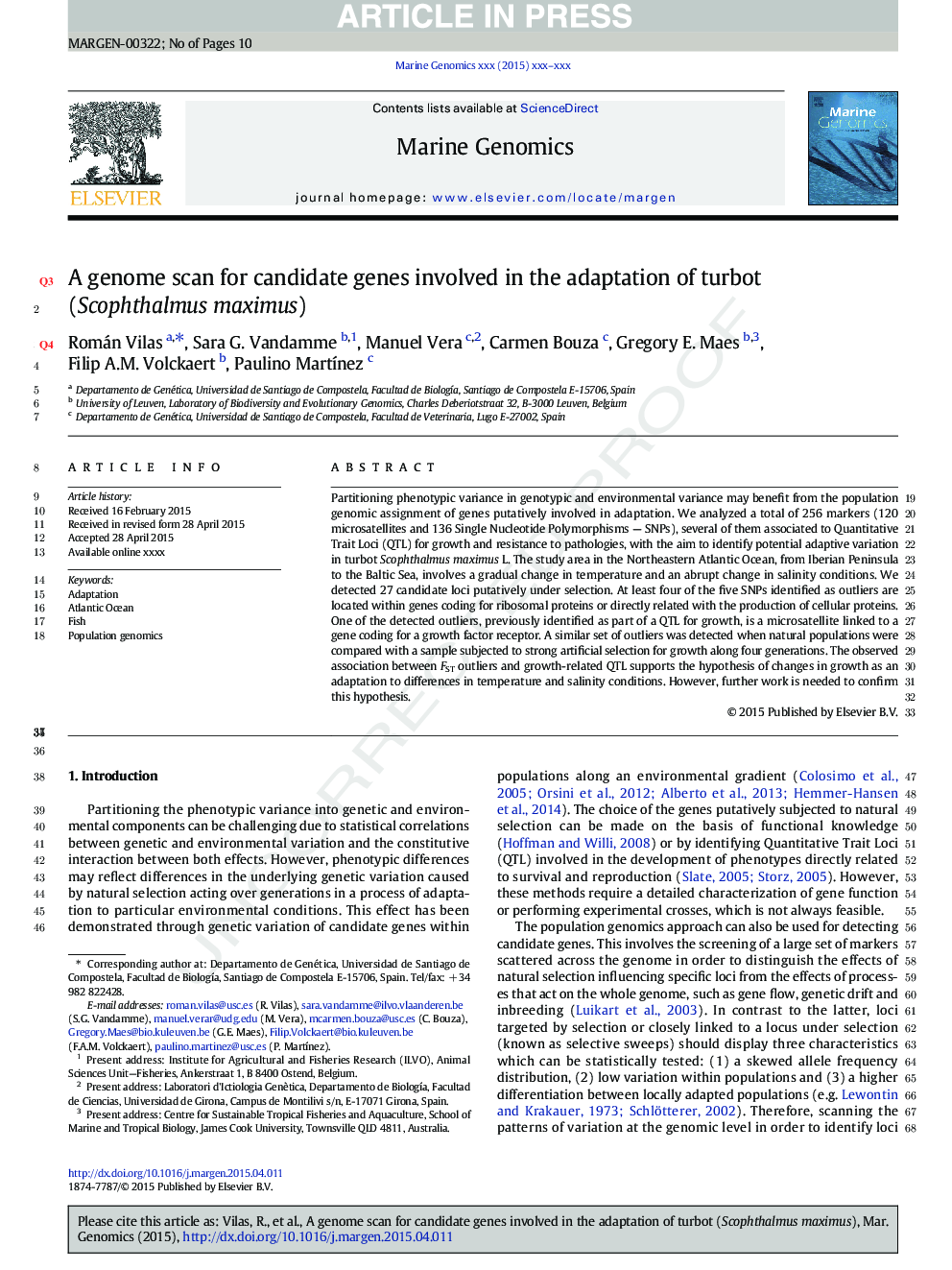| Article ID | Journal | Published Year | Pages | File Type |
|---|---|---|---|---|
| 8388408 | Marine Genomics | 2015 | 10 Pages |
Abstract
Partitioning phenotypic variance in genotypic and environmental variance may benefit from the population genomic assignment of genes putatively involved in adaptation. We analyzed a total of 256 markers (120 microsatellites and 136 Single Nucleotide Polymorphisms - SNPs), several of them associated to Quantitative Trait Loci (QTL) for growth and resistance to pathologies, with the aim to identify potential adaptive variation in turbot Scophthalmus maximus L. The study area in the Northeastern Atlantic Ocean, from Iberian Peninsula to the Baltic Sea, involves a gradual change in temperature and an abrupt change in salinity conditions. We detected 27 candidate loci putatively under selection. At least four of the five SNPs identified as outliers are located within genes coding for ribosomal proteins or directly related with the production of cellular proteins. One of the detected outliers, previously identified as part of a QTL for growth, is a microsatellite linked to a gene coding for a growth factor receptor. A similar set of outliers was detected when natural populations were compared with a sample subjected to strong artificial selection for growth along four generations. The observed association between FST outliers and growth-related QTL supports the hypothesis of changes in growth as an adaptation to differences in temperature and salinity conditions. However, further work is needed to confirm this hypothesis.
Related Topics
Physical Sciences and Engineering
Earth and Planetary Sciences
Earth and Planetary Sciences (General)
Authors
Román Vilas, Sara G. Vandamme, Manuel Vera, Carmen Bouza, Gregory E. Maes, Filip A.M. Volckaert, Paulino MartÃnez,
